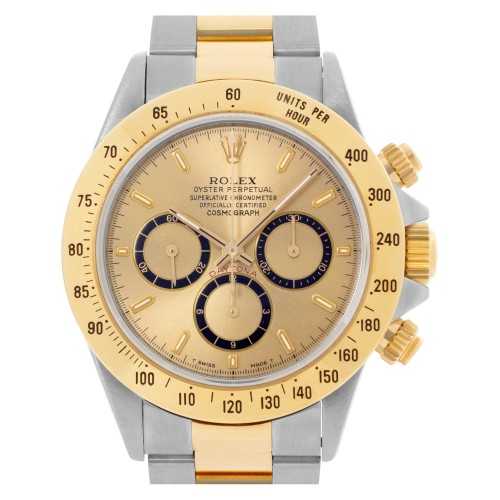What Is The Rolex Milgauss GV?
Although the Milgauss has been a part of the Rolex catalog since the mid-1950s, the newest versions have a very distinct design trait known as the GV. But what exactly is the Rolex Milgauss GV? Let’s find out.

Quick History Recap of the Rolex Milgauss
According to Rolex, the Milgauss watch was introduced in 1956 specifically for the scientific community—however, there have been some vintage Milgauss models dated to a few years before that official release year.
Gauss is a unit used to measure magnetism while “mille” is the French for thousand. Therefore, as its name suggests, the Milgauss is antimagnetic up to 1,000 gauss. Exposing a watch movement to high magnetism is detrimental to its accuracy and as scientists, engineers, and doctors were frequently working in high magnetic fields during the rapid scientific developments in the mid-20th Century, the need for an antimagnetic timepiece was clear. To achieve its antimagnetic capabilities, the Milgauss’ movement was shrouded by a ferromagnetic alloy shield and Rolex sent the watch to The European Organization for Nuclear Research (CERN) for testing.

The first reference to kick off the then-new model was the Milgauss 6543 shortly followed by the Milgauss ref. 6541 a few years later. Both references featured a large-for-the-era 38mm steel case, a black rotating and bezel graduated to 60 minutes for timing capabilities, a black dial, and a Faraday cage-inspired soft iron shield safeguarding the automatic movement inside the case. However, the latter Milgauss ref. 6541 included a design trait that would later become a signature of Rolex’s modern antimagnetic watch—the lightning bolt seconds hand as a nod to the scientific community it was serving.
By 1960, Rolex introduced the Milgauss ref. 1019, which surprisingly shed many of the design elements of preceding reference. Gone was the rotating bezel, replaced by a smooth unmarked steel one. The black dial was swapped out for the choice of white or black. And perhaps most importantly, the lightning bolt seconds hand was pushed aside for a more conventional straight silhouette with a red arrow tip. While Rolex continued to produce the Milgauss 1019 until the late 1980s, the entire model was quietly shelved in 1988.
The Modern Milgauss and the GV Crystal
In a surprising move, Rolex revived the Milgauss in 2007 in a completely redesigned form. The Milgauss 116400 grew to a contemporary 40mm case size, still only available in stainless steel and fitted with a smooth steel bezel. Not only did the iconic lightning bolt seconds hand return but it was also made in a bright orange color for added punch.

In 2007, Rolex unveiled three Milgauss models: the Milgauss ref. 116400 with a white dial, the Milgauss ref. 116400 with a black dial, and the Milgauss ref. 116400GV, which also had a black dial. However, the “GV” in the reference number signaled something special. In fact, the Rolex Milgauss GV was dubbed the Anniversary Milgauss. GV stands for “Glace Verte,” which is French for “Green Glass” in reference to the green-tinted sapphire crystal that sat above the dial of the Milgauss ref. 116400GV.
Rolex reports that the GV green sapphire crystal took years to develop and weeks to manufacture. According to the brand, it is such an arduous process that Rolex did not even bother with patenting it since they couldn’t imagine any other company wanting to undertake the ordeal. Like all sapphire crystal, the green Rolex one is scratch-resistant—but it is also fade-proof, meaning that the Milgauss GV will always retain that seductive green glow. Looks-wise, the addition of the green crystal on the Rolex Milgauss GV adds a unique radiance to the face of the watch and elicits a touch of sci-fi vibes.
In 2014, Rolex added another Milgauss ref. 116400GV to the mix, this time with a “Z-Blue” dial, which is a distinctive shade of electric blue. Between the electric blue dial, orange accents, and green crystal, the Milgauss ref. 116400GV “Z-Blue” is the most whimsical watch to ever come out of the lauded Rolex factory.
The Milgauss Today
Today, Rolex has doubled down on the green sapphire by only producing GV versions of the Milgauss—offering a choice of a black or Z-Blue dial. The company discontinued the non-GV white dial Milgauss in 2014 and the non-GV black dial Milgauss in 2016.

Colorful, charming, and unapologetically quirky, the Rolex Milgauss GV is a top-tier watch that may be antimagnetic in function but is certainly magnetic in style.
The Essential Guide To Popular Rolex Watch Nicknames
NEXT ARTICLE
What Is The Rolex Explorer II Polar?





